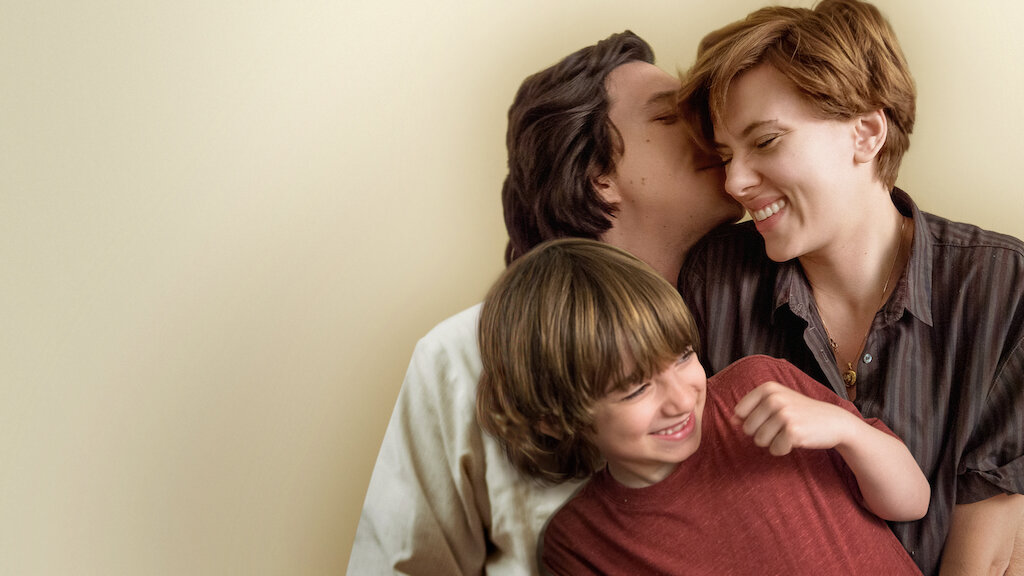Noah Baumbach’s “Marriage Story” is a film that explores the dissolution of a marriage and the impact it has on both parties involved. The film’s raw and emotional portrayal of divorce has captured the hearts of audiences and critics alike, earning it numerous awards and nominations. However, what makes “Marriage Story” truly stand out is its screenplay, which skillfully balances heart-wrenching drama with moments of humor and levity. In this blog post, we will dive deep into the “Marriage Story” script and examine what makes it such a powerful piece of storytelling. From the structure to the dialogue to the character development, we will explore how Baumbach crafted a script that brings these complex characters and their relationship to life on the big screen.
Analyzing the Marriage Story Script: Weaving the Narrative Arc
“Marriage Story” is structured in a way that draws the audience in and keeps them engaged throughout the film’s two-hour runtime. The film is divided into three distinct acts, each of which explores a different stage of the relationship between Charlie and Nicole.
The first act establishes the couple’s initial separation, which sets the stage for the drama to come. This act introduces us to the couple’s son, Henry, and sets up the conflict between Charlie and Nicole over where Henry will live.
The second act delves deeper into the couple’s divorce proceedings, highlighting the legal and emotional battles they face as they try to come to an agreement about custody and visitation. This act also introduces us to a host of new characters, including Nora Fanshaw, Nicole’s attorney, and Bert Spitz, a gruff but kind-hearted attorney who helps Charlie.
The third act brings the story full circle, showing us how Charlie and Nicole are coping after the divorce has been finalized. This act is marked by a moving sequence in which the two characters read letters they have written to each other, expressing their regrets and their hopes for the future.
Throughout the film, Baumbach uses various techniques to keep the audience engaged and emotionally invested in the story. For example, he employs a number of flashbacks and dream sequences to show us the couple’s history and to give us insight into their innermost thoughts and feelings.
Another technique that Baumbach uses effectively is the way he interweaves humor and drama throughout the script. Despite the heavy subject matter, the film is peppered with moments of levity and warmth that help to break up the tension and keep the audience engaged.
Analyzing the Marriage Story Script: Balancing Humor and Heartbreak
One of the most striking aspects of “Marriage Story” is its dialogue, which manages to strike a delicate balance between humor and heartbreak. Baumbach’s script is filled with witty and acerbic one-liners, but also has moments of raw emotion that cut deep.
The film’s opening scene, for example, features Charlie and Nicole listing the things they love about each other in a couples therapy session. The scene is both humorous and poignant, as we see the couple struggle to communicate their feelings to each other.
Throughout the film, Baumbach’s dialogue captures the complexities of divorce and the range of emotions that come with it. There are moments of bitter anger and resentment, but also moments of tenderness and vulnerability.
One of the standout scenes in the film is the argument between Charlie and Nicole in Charlie’s apartment. The scene is a masterclass in dialogue, as the two characters hurl insults and accusations at each other with a raw intensity that is hard to watch. But even in the midst of the argument, there are moments of humor that help to lighten the mood and prevent the scene from becoming too overwhelming.
Baumbach also uses dialogue to reveal important information about the characters and their relationships. For example, we learn a great deal about Charlie’s relationship with his mother through his conversations with her, and we gain insight into Nicole’s perspective through her conversations with her sister.
Analyzing the Marriage Story Script: Portraying Realistic and Complex Individuals
“Marriage Story” features a richly developed cast of characters, each of whom is portrayed with a depth and complexity that is rare in cinema. Baumbach’s script does an excellent job of showing us the different facets of each character’s personality and how they interact with each other.
Charlie and Nicole, the film’s central characters, are particularly well-developed. We see both the good and bad sides of their personalities, and are able to empathize with each of them despite their flaws. We see Charlie’s struggles as a father and a husband, and Nicole’s frustration with feeling trapped in her marriage and her desire to pursue her own dreams.
The film also features a number of supporting characters who are just as well-developed as the main characters. Nora Fanshaw, Nicole’s attorney, is a particularly memorable character. She is tough and determined, but also compassionate and understanding. Bert Spitz, Charlie’s attorney, is another standout character, with his gruff exterior masking a heart of gold.
One of the most impressive things about the character development in “Marriage Story” is the way that the characters evolve and change over the course of the film. We see Charlie and Nicole start out as a loving couple, but as the divorce proceedings wear on, their relationship becomes more strained and their feelings for each other become more complicated.
Similarly, we see supporting characters like Nora and Bert grow and change over the course of the film. Nora starts out as a staunch advocate for Nicole, but as she gets to know Charlie and sees the impact the divorce is having on him, she becomes more sympathetic to his cause. Bert, meanwhile, starts out as a gruff and somewhat intimidating figure, but as we get to know him better, we see his softer side and his genuine concern for Charlie and his family.
Analyzing the Marriage Story Script: Exploring the Nuances of Divorce and Parenthood
“Marriage Story” is a film that deals with complex and nuanced themes related to divorce and parenthood. Baumbach’s script is able to explore these themes in a way that is both sensitive and insightful.
One of the central themes of the film is the idea that divorce is a messy and painful process. Baumbach doesn’t shy away from showing us the emotional toll that divorce can take on a family, and he doesn’t try to sugarcoat the difficulties that come with it. The film is a realistic portrayal of the struggles that come with ending a marriage, and it is a reminder that divorce can be a traumatic experience for everyone involved.
Another theme that the film explores is the idea that divorce is not just a legal process, but a deeply personal one as well. The film shows us the impact that the divorce has on Charlie and Nicole’s relationship with each other, as well as on their relationships with their son, Henry. We see how the divorce affects every aspect of their lives, and how it brings to the surface long-simmering resentments and conflicts.
The film also explores the theme of parenthood, and the ways in which divorce can impact a child’s life. We see Henry struggle to come to terms with his parents’ separation, and we see how he is caught in the middle of their conflicts. Baumbach doesn’t shy away from showing us the impact that divorce can have on a child’s emotional well-being, and he reminds us that the decisions that adults make can have a lasting impact on their children.
Another theme that the film explores is the idea that divorce can be an opportunity for growth and self-discovery. While the film is a realistic portrayal of the difficulties that come with divorce, it also shows us that it can be a time for people to reassess their lives and their priorities. We see Charlie and Nicole both struggle to find their footing in the wake of the divorce, but we also see them grow and change as they come to terms with their new reality.
The film also touches on the theme of forgiveness, and the ways in which it can be both difficult and essential. We see both Charlie and Nicole struggle to forgive each other for past transgressions, but we also see the ways in which forgiveness can bring a sense of closure and healing.
Overall, “Marriage Story” is a film that explores complex and nuanced themes related to divorce and parenthood. Baumbach’s script is a thoughtful and sensitive portrayal of the emotional toll that divorce can take on a family, and it is a reminder that the decisions that adults make can have a lasting impact on their children.
Click here to read the script.
Related:


Leave a Reply